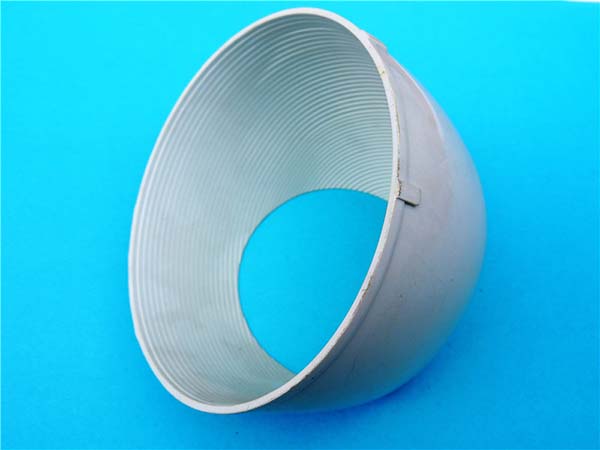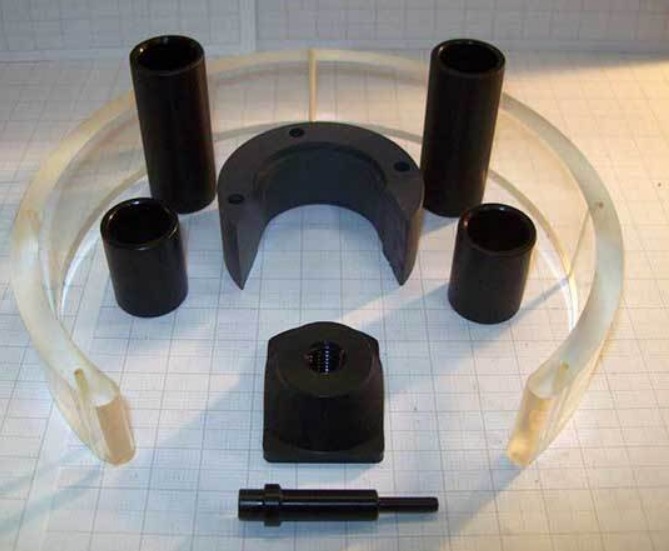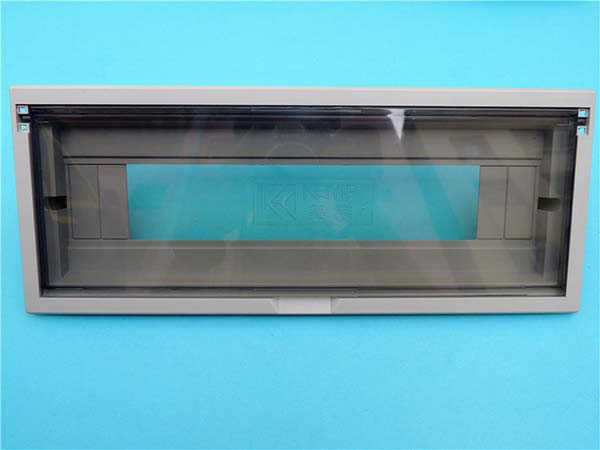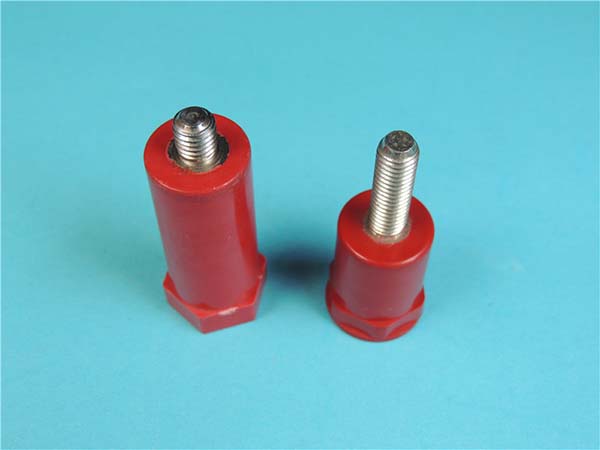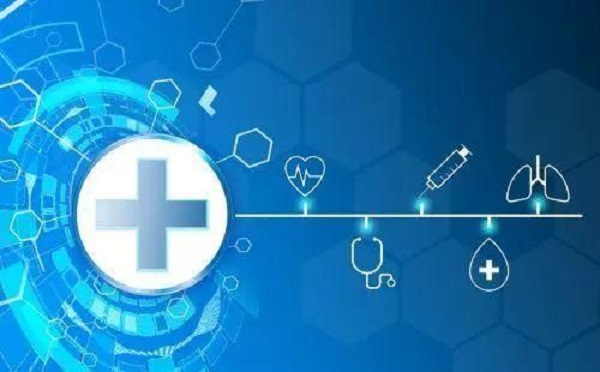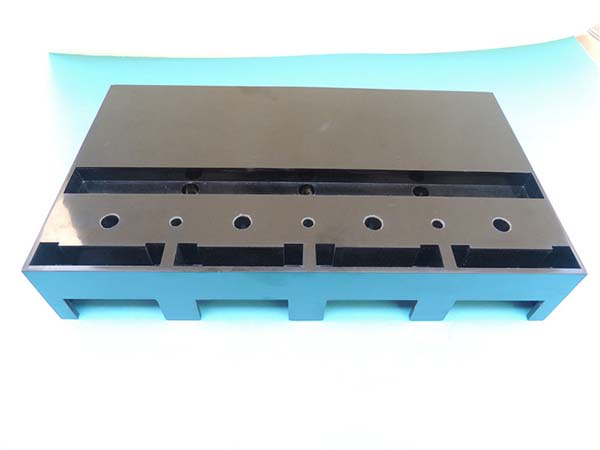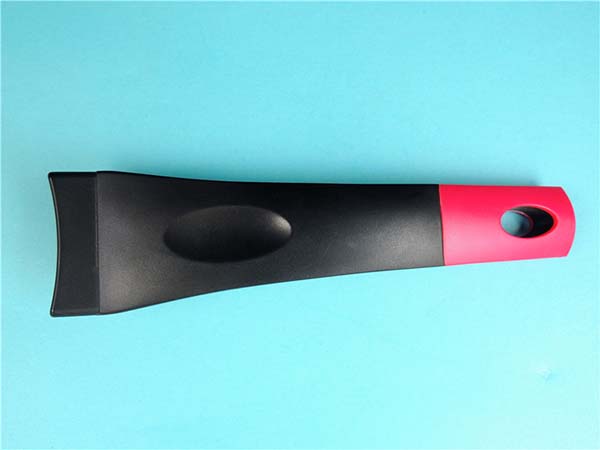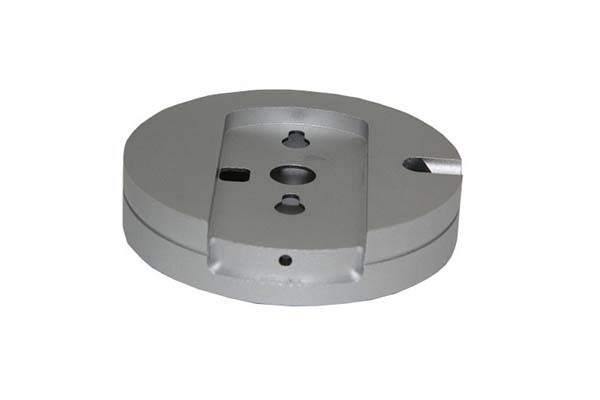Introduction
In the fast-paced world of modern manufacturing, time is of the essence. Rapid prototyping systems have emerged as a game - changer, revolutionizing the way products are developed and brought to market. These systems enable manufacturers to quickly transform their design concepts into physical prototypes, significantly reducing the time and cost associated with traditional prototyping methods.
Imagine you have a brilliant idea for a new product. In the past, turning that idea into a tangible prototype could be a long and arduous process. You might have to spend weeks or even months going through multiple design iterations, waiting for custom - made molds to be fabricated, and dealing with high production costs for a single prototype. However, with rapid prototyping systems, you can have a working prototype in your hands in a matter of days or even hours.
This not only allows you to test your design concepts early in the development cycle but also enables you to gather valuable feedback from stakeholders, customers, or investors. By quickly identifying and rectifying design flaws, you can save a substantial amount of time and money that would otherwise be wasted in the later stages of production. In the following sections, we will explore the different types of rapid prototyping systems, their working principles, applications across various industries, and the factors to consider when choosing the right system for your needs.
How Do Rapid Prototyping Systems Work?
Rapid prototyping systems operate based on the principle of discrete and stacking formation. The process begins with a three - dimensional Computer - Aided Design (CAD) model of the product. This CAD model serves as the digital blueprint for the entire prototyping process.
1. Discretization
The first step is to convert the 3D CAD model into a series of 2D cross - sectional slices. Think of it like slicing a loaf of bread; each slice represents a thin layer of the final 3D object. The software divides the model along a particular axis (usually the Z - axis), and the thickness of these slices can be adjusted according to the desired level of detail and the capabilities of the rapid prototyping system. For example, a higher - resolution prototype might have slices that are only 0.1 mm thick, while a lower - resolution one could have slices up to 0.5 mm thick. This slicing process is crucial as it breaks down the complex 3D geometry into simpler 2D shapes that can be more easily processed.
2. Material Deposition or Solidification
Once the slices are defined, the rapid prototyping system starts building the prototype layer by layer. Different types of rapid prototyping technologies use various methods for this step:
- Fused Deposition Modeling (FDM): In an FDM system, a thermoplastic filament is fed into an extruder. The extruder heats the filament until it becomes semi - liquid and then extrudes it through a nozzle. The nozzle moves in the X - Y plane according to the cross - sectional shape of each slice, depositing the molten plastic layer by layer. As the plastic cools, it solidifies and bonds to the previous layer. For instance, if you are creating a small plastic figurine, the FDM machine will start from the bottom layer, gradually building up the legs, body, and then the head by depositing the plastic in the right shape for each layer.
- Stereolithography (SLA): SLA systems work with a vat of liquid photopolymer resin. A high - precision laser beam is directed onto the surface of the resin. The laser cures (solidifies) the resin in the areas where it hits, following the cross - sectional pattern of each slice. After each layer is cured, the build platform is lowered slightly, and a new layer of resin is spread over the previously cured layer. This process continues until the entire 3D object is formed. SLA is often used for creating highly detailed prototypes with smooth surfaces, such as jewelry prototypes or small, intricate mechanical parts.
- Selective Laser Sintering (SLS): In SLS, a bed of powdered material (such as plastic, metal, or ceramic powder) is used. A high - power laser selectively sinters (fuses) the powder particles together in the shape of each cross - sectional slice. As the laser moves across the powder bed, the sintered layers bond to each other, gradually building up the 3D object. SLS is suitable for creating prototypes with complex internal structures since the unsintered powder can support overhanging features during the building process.
3. Post - processing
After the layers are stacked and the basic 3D shape is formed, post - processing steps are usually required. This may include removing any support structures that were used during the building process to hold up overhanging parts. Support structures are often made of the same or a different material depending on the rapid prototyping technology. For example, in FDM, soluble support materials can be used, which can be easily removed by dissolving them in a specific solvent. Other post - processing steps may involve sanding, polishing, or painting the prototype to improve its surface finish and appearance, making it more representative of the final product.
Types of Rapid Prototyping Systems
There are several types of rapid prototyping systems, each with its own unique working principle, advantages, and limitations. Understanding these different types can help you make an informed decision when choosing the right system for your project.
Stereolithography (SLA)
SLA is one of the earliest rapid prototyping technologies. It works by using a high - precision ultraviolet (UV) laser to cure liquid photopolymer resin layer by layer. When the UV laser beam hits the resin, it initiates a chemical reaction that solidifies the resin, following the cross - sectional shape of each slice of the 3D model.
- Advantages:
- High Precision: SLA can achieve very high precision, with layer thicknesses as thin as 0.05 - 0.1 mm. This makes it ideal for creating highly detailed prototypes, such as jewelry, dental models, and small intricate mechanical parts. For example, in the jewelry industry, SLA can accurately reproduce the fine details of a complex ring design, including delicate engravings and filigree work.
- Smooth Surface Finish: The cured resin results in a smooth surface, reducing the need for extensive post - processing in terms of surface finishing. This is beneficial when the prototype needs to closely resemble the final product's appearance.
- Limitations:
- Limited Material Options: SLA is mainly limited to photopolymer resins. Although there are different types of resins available, the material selection is not as diverse as some other rapid prototyping technologies.
- Brittle Parts: The cured resin parts can be relatively brittle, which may not be suitable for applications that require high - strength or impact - resistant prototypes.
Selective Laser Sintering (SLS)
SLS uses a high - power laser to sinter powdered materials, such as plastic, metal, or ceramic powder, into a solid object. The laser selectively heats the powder particles, causing them to fuse together in the shape of each cross - sectional slice of the 3D model.
- Advantages:
- Complex Shape Capability: SLS can create parts with complex internal structures and overhanging features without the need for additional support structures, as the unsintered powder provides natural support during the building process. For instance, it can produce a prototype of a heat exchanger with intricate internal channels for fluid flow.
- Wide Material Selection: It supports a wide range of materials, including various plastics like nylon, metal powders such as stainless steel and titanium, and ceramic powders. This makes it suitable for different applications, from creating functional plastic prototypes to high - strength metal parts for aerospace or automotive testing.
- Limitations:
- Surface Roughness: The surface finish of SLS - printed parts is generally rougher compared to SLA. This may require more post - processing if a smooth surface is crucial for the prototype's function or appearance.
- High Equipment Cost: SLS machines are often more expensive than some other rapid prototyping systems, which can be a barrier for small businesses or those with limited budgets.
Fused Deposition Modeling (FDM)
FDM is one of the most widely used rapid prototyping technologies, especially for desktop 3D printers. It works by heating a thermoplastic filament until it becomes semi - liquid and then extruding it through a nozzle. The nozzle moves in the X - Y plane, depositing the molten plastic layer by layer to build the 3D object.
- Advantages:
- Low Cost: FDM printers are relatively inexpensive compared to SLA and SLS systems, making them accessible to small businesses, hobbyists, and educational institutions. The cost of materials, such as PLA (polylactic acid) and ABS (acrylonitrile butadiene styrene) filaments, is also relatively low.
- Easy to Use: FDM printers are generally easy to operate and maintain. They have a simple working principle, and the software for preparing the 3D model for printing is user - friendly. This makes it a popular choice for those new to rapid prototyping.
- Versatile Applications: FDM can be used for a wide range of applications, from creating simple concept models to functional prototypes for testing fit and form. It is commonly used in product design, architecture for creating scale models, and in the DIY community for various creative projects.
- Limitations:
- Lower Precision: FDM typically has a lower precision compared to SLA and SLS. The layer thickness is usually in the range of 0.1 - 0.4 mm, which may result in visible layer lines on the surface of the prototype.
- Limited Material Strength: The strength of FDM - printed parts can be affected by the layer - by - layer construction. In some cases, the parts may not be as strong as those made through other manufacturing methods, especially when it comes to handling high - stress applications.
Applications of Rapid Prototyping Systems
In the Automotive Industry
Rapid prototyping systems play a crucial role in the automotive industry. They are extensively used for creating prototypes of various automotive parts. For example, engine components such as cylinder heads can be prototyped using SLS with metal powders. This allows engineers to test the design for functionality, heat dissipation, and compatibility with other engine parts before mass production. Concept car models are also commonly made using rapid prototyping. A design studio might use SLA to create a highly detailed, smooth - surfaced model of a new concept car's body. The model can be used for visual presentations to stakeholders, marketing purposes, and even wind - tunnel testing to analyze aerodynamic performance. In fact, some automotive companies report that using rapid prototyping has reduced the time from concept to production - ready design by up to 50% for certain components.
In the Aerospace Field
In aerospace, where precision and high - performance materials are essential, rapid prototyping systems have found significant applications. Complex structural parts, like the frames of satellites or aircraft wings' internal support structures, can be fabricated using advanced rapid prototyping techniques. SLS with high - strength metal powders such as titanium alloy is often used. This enables the creation of parts with intricate lattice structures, which are both lightweight and strong, crucial for aerospace applications. Engine components, such as turbine blades, can also be prototyped. These prototypes can be tested under extreme conditions in a laboratory to ensure they can withstand high temperatures, pressures, and rotational forces. By using rapid prototyping, aerospace companies can save months in the development cycle of new aircraft or space vehicles and reduce the risk of costly design flaws during actual production.
In the Medical Sector
The medical sector benefits greatly from rapid prototyping systems. Custom - made medical devices are becoming more common. For instance, orthopedic implants can be designed and produced using rapid prototyping according to a patient's specific bone structure. FDM with biocompatible materials like some types of polycarbonates can be used to create a personalized knee implant. This ensures a better fit and potentially reduces the risk of rejection. 3D - printed anatomical models are also widely used for surgical planning. Surgeons can use SLA - printed models of a patient's heart or brain to better understand the complex anatomy before performing a high - risk operation. These models can be colored and detailed to accurately represent different tissues and blood vessels. A study showed that in complex neurosurgeries, the use of 3D - printed brain models increased the success rate by 15% as surgeons were better prepared.
Yigu Technology's View
As a non - standard plastic metal products custom Supplier, Yigu Technology highly values the role of rapid prototyping systems. These systems are crucial in product development and customization. They enable us to quickly translate our clients' unique design ideas into physical prototypes. For example, when a client has a complex design for a plastic part, we can use rapid prototyping to quickly produce a sample for them to review. This not only saves time but also allows for easy modification based on client feedback.
In the customization process, rapid prototyping systems offer great flexibility. We can adjust the design parameters according to the client's requirements and quickly produce a new prototype. This ability to meet diverse customer needs helps our clients gain a competitive edge in the market. The future of rapid prototyping in product customization is bright, and we look forward to exploring more applications to serve our clients better.
